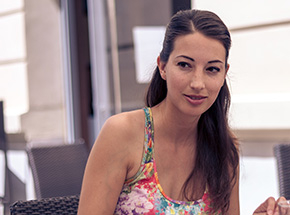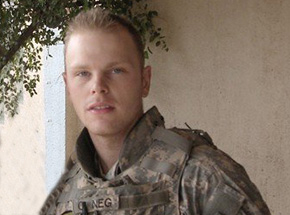- About BT����
- History of BT����
- Mission & Core Values
- Vision and Leadership
- BT���� Recognition
- Alumni Success
- Campus Development
- Arts at BT����
- Policies & Guidelines
- Academics
- Undergraduate
- Graduate Programs
- MA in Diplomacy and International Law
- MA in Global Communications
- MSc in Human Rights and Data Science
- MA in International Affairs
- MA in International Affairs, Conflict Resolution, and Civil Society Development
- MSc in International Management
- MSc in Strategic Brand Management
- Find Your Thesis Advisor
- Previous Programs
- Cultural Program
- Faculty
- Summer School
- Research Centers
- The Center for Critical Democracy Studies
- The Center for Writers and Translators
- The George and Irina Schaeffer Center for the Study of Genocide, Human Rights and Conflict Prevention
- The Joy and Edward Frieman Environmental Science Center
- The Center for Media, Communication & Global Change
- Departments
- Academic Resources
- Academic Affairs
- Academic Calendar
- Academic Resource Center
- Library
- Registrar's Office
- Teaching and Learning Center
- Employer Network
- Accessibility & Accommodation Services
- Quai D'Orsay Learning Commons
- Paris as Classroom
- ACE Center
- Admissions
- Student Life
- Campus
- Get Involved
- Paris
- Support Services
- Student Development Help Desk
- Student Accounting Services
- Student Immigration Services
- Student Grievance Procedure
- Accessibility at BT����
- Diversity and Inclusion
- Health & Well-being
- Digital Student Handbook
- News
- Events
- BT���� Giving
- Housing Offer for 2024-2025
- Housing | Spring 2024
- IRIS Project
- IT Services
- Alumni
- About BT����
- History of BT����
- Mission & Core Values
- Vision and Leadership
- BT���� Recognition
- Alumni Success
- Campus Development
- Arts at BT����
- Policies & Guidelines
- Academics
- Undergraduate
- Graduate Programs
- MA in Diplomacy and International Law
- MA in Global Communications
- MSc in Human Rights and Data Science
- MA in International Affairs
- MA in International Affairs, Conflict Resolution, and Civil Society Development
- MSc in International Management
- MSc in Strategic Brand Management
- Find Your Thesis Advisor
- Previous Programs
- Cultural Program
- Faculty
- Summer School
- Research Centers
- The Center for Critical Democracy Studies
- The Center for Writers and Translators
- The George and Irina Schaeffer Center for the Study of Genocide, Human Rights and Conflict Prevention
- The Joy and Edward Frieman Environmental Science Center
- The Center for Media, Communication & Global Change
- Departments
- Academic Resources
- Academic Affairs
- Academic Calendar
- Academic Resource Center
- Library
- Registrar's Office
- Teaching and Learning Center
- Employer Network
- Accessibility & Accommodation Services
- Quai D'Orsay Learning Commons
- Paris as Classroom
- ACE Center
- Admissions
- Student Life
- Campus
- Get Involved
- Paris
- Support Services
- Health & Well-being
- Digital Student Handbook
- News
- Events
- BT���� Giving
- Housing Offer for 2024-2025
- Housing | Spring 2024
- IRIS Project
- IT Services
- Alumni
Paris as Classroom
Paris as Classroom
Arab World Institute
Spotlight On a Class Visit
In Fall semester, 2020, a group of students taking Politics of Modern Middle Eastern Art participated in a class trip to Paris’s Arab World Institute, known in French as l’Institut du monde arabe. Opened in 1987, the Arab World Institute seeks to provide a cultural bridge between France, Europe and the Arab world by opening a dialogue between these regions and developing cultural projects alongside the region’s artists, institutions and thinkers.
“Paris is today a vibrant city for not only Western art but also Asian, African and Middle Eastern art,” says Sultan Sooud Al-Qassemi ’98, a visiting professor and BT���� alumnus who taught the class in question. Politics of Middle Eastern Art explored the interplay between artistic and political movements in the Arab world from the beginning of the 20th century. “The Arab World Institute sums up so much of what the class was about with respect to the representation of non-Western art,” says Al-Qassemi. “I must have been two dozen times as a student. At the time, I’d never seen the Arab world presented holistically.”
It was really interesting, because art can tell us a lot about the sociopolitical situation in the region and how that has shaped cultural production.
The trip to the Arab World Institute was a unique opportunity for students to appreciate contemporary Middle Eastern art while taking a unified approach to the region and appreciating its cultural ties to France. It offered students the chance to see many of the artworks discussed in the classroom first-hand instead of on screen. “It's essential to do that because you develop a sense of familiarity and intimacy with the works,” says Al-Qassemi.
The contemporary aspect of the artworks on display particularly appealed to Maria Karkour, a senior and transfer student from the American University of Beirut: “It was really interesting, because art can tell us a lot about the sociopolitical situation in the region and how that has shaped cultural production.” She cites Au-delà de la mer, an exhibit by French-Lebanese artist François Sargologo, as one of her personal highlights. The series consists of photos of Beirut in the 1980s during the Lebanese Civil War and includes accompanying comments from the artist describing his sensory experiences while taking the photo. “He merges the photos with a sense of nostalgia that really brings them to life,” says Karkour. “Because I lived through the explosion in Beirut on August 4, 2020, the exhibition really resonated with me.”
After viewing the museum’s temporary collections, the attending students also met with the Institute’s Director, Jack Lang – a prominent French cultural figure and former politician – as well as art collector Claude Lemand, who has donated over 1,300 works to the museum. Karkour notes the importance of Lemand’s artistic philanthropy: “His collection conveys Middle Eastern art in the way it should be conveyed – not with a Western gaze.”
The opportunity to approach subjects with an international angle from a variety of different perspectives is a hallmark of studying at BT����, and Paris provides ample opportunity to visit museums, monuments and organizations that contextualize such international viewpoints. “It used to be special when I was a student,” says Al-Qassemi. “It’s even more special today.”
Related
-

Kristina Keenan ’08
Alumna
Read MoreKristina Keenan ’08
Alumna
That was my student experience at BT���� in a nutshell – a culturally rich, international learning environment.
-

Matthew Ness ’09
Alumnus
Read MoreMatthew Ness ’09
Alumnus
BT���� impressed me immediately as the right place to develop my interests.
-

Fatima
Student
Read MoreFatima
Student
Fatima took part in the Athens Democracy Forum, organized by the Democracy and Culture Foundation in association with the New York Times.




